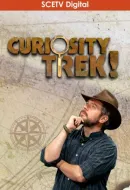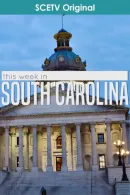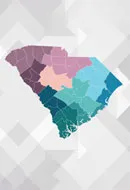
From our Educator Guest Blogger Series
Geography is the study of Earth as the home of people. Earth is the only place where people have ever lived and it is our responsibility to learn about and take care of this place. Geography is about the interplay between social and physical systems on this planet, and educators need to be well-versed in how our world “ticks.” The Profile of the South Carolina Graduate demands that we provide world-class knowledge, world-class skills, and a global perspective to our students. We cannot, however, prepare our students for the world if they do not learn about that world. It is in this space that quality geography teaching must occur.
Geographic facts are important. Inasmuch as the twenty-six letters in our alphabet are crucial to building words, sentences, paragraphs, and ultimately communicating ideas, so too are facts about places. They are the building blocks for exploring how and why places exist as they do and interact with each other. Too often, however, educators stop here. Coloring maps and making lists: these tasks do not lead to geographic understanding, nor do they engage students with the skills they need to see patterns in data or the complexity of Earth’s human and physical systems.
Employing a geographic lens toward problem-solving – the idea that space and place matter in understanding and decision-making – is embraced by the new South Carolina Social Studies College- and Career-Ready Standards. Geography is now the focus for Grades 3, 7, and 9 within the new standards document.1 Not just a set of standards and indicators focused on specific content, the document also presents the skills needed to actually do geography. In other words, the goal is to move teaching toward a student-centered environment where content is paired with skills to promote self-discovery and enduring understanding by students.2
Investigating Issues with Geography
Geography can be used to answer any number of compelling and real-world questions. One of the new seventh grade standards can readily illustrate this point. Standard 3 states that students are to “analyze the cultural, economic, environmental, physical, political, and population geographies of contemporary Australia, Oceania, and Antarctica.” Five indicators take the class through the content of these topics, but the sixth indicator calls for action: “Gather evidence and construct a map or model to investigate a significant contemporary cultural, economic, or political issue facing Australia, Oceania, or Antarctica at the local, regional, or global scale.”
Here, students may choose to consider the following compelling question:
How can resource scarcity, demand, and extraction re-draw Antarctica’s political map?
To answer this question, students will need to determine who “owns” Antarctica by using political maps in an atlas; explore the legal documents that govern territorial claims; research minerals present for exploitation; create maps (using digital technologies) to show obstacles to trading these minerals; and so on. Importantly, the students apply three skills during their investigation: 1) they map; 2) they explore important conditions and connections; and 3) they reveal how outcomes vary as a result of geographic scale.
A culminating activity can bring the lesson home by comparing the positives and negatives of resource extraction in Antarctica to those in South Carolina. Our state is currently struggling with this very issue related to offshore petroleum drilling. What is the role of the state versus the federal government in making this decision (scale)? Where are these resources located (conditions; region)? Can an oil spill harm other things we value like wildlife or a healthy tourism industry (connections)?
Several previously taught content indicators (identifying places; identifying resource patterns; analyzing political relationships) are reinforced while investigating this question. Importantly, students learn three crucial lessons: that resources are defined by people; that some resources exist in finite quantities and deposits vary spatially; and that political boundaries and economic motivations are fluid. These are basic learning outcomes that apply and endure beyond the specific Antarctica example. The question about this far-away place becomes compelling as students realize that these same issues resound in their own local environment. The holistic approach and use of this problem-solving lens are at the heart of geographic inquiry. Taught in this way, students find geography exciting and meaningful.
Resources and Professional Development
Geographic thinking is new to many teachers. Few have had more than one geography-specific course in their teacher preparation program, and many are concerned about their own geographic content knowledge. I speak confidently on this point having worked with more than 30,000 teachers and students over the last fifteen years. I encourage these same educators to take on the advice they dispense to their own students: become life-long learners. Assistance is available to become a better geography educator. Four opportunities are shared here.
- Become a National Geographic Certified Educator.
Educator certification connects you to like-minded teachers who believe that learning about our world is crucial to preparing our students for college, career, and/or citizenship. Certified educators build skills that enhance geography learning across curricular areas and are eligible to apply for further National Geographic learning opportunities.
- Use the Geo-Inquiry Process in your teaching.
If an inquiry approach to geography seems intimidating, take an online course in the Geo-Inquiry Process developed by National Geographic or use their resources. You and your students will learn how to Ask geographic questions, Collect geographic data, Visualize geographic information, Create geographic stories, and Act on your learning to change your community or other places on Earth for the better.
- Join the National Council for Geographic Education.
NCGE is the leading voice for geography education in the United States. Working with teachers since 1915, the council hosts an annual meeting to share ideas, publishes two journals with material useful for geography teaching, and hosts content webinars to improve your practice.
- Engage with the South Carolina Geographic Alliance.
For more than thirty years, the South Carolina Geographic Alliance has provided classroom materials and professional development to help educators. A state atlas, a poster series, and a giant map of South Carolina are among the resources available. Alliance staff visit schools and school districts to provide widely-respected and useful professional development. Assistance is one phone call away, and alliance membership is free.
Geography often has been neglected or, perhaps worse, poorly-taught in South Carolina. The new state academic standards for social studies provide a content and skills framework that improves greatly on this past deficiency. How well our students succeed will depend on our teachers accessing the materials and resources available to provide the world-class knowledge and world-class skills we have deemed crucial. Geographic inquiry is exciting and a geography revolution is taking place in South Carolina schools. This is one you will want to join.
Notes
1. Geography (both college prep and Advanced Placement Human Geography) is typically taught in Grade 9 in South Carolina high schools, but this is not a state requirement. Schools may offer these elective courses in a grade level of their own choosing.
2. The geography skills are identical for elementary, middle, and high school students. Where they differ is in classroom application. Regarding mapping, a third-grade student might use a map to identify agricultural patterns like where corn is grown in the United States. A high school student could go much further by making a map: they could gather agricultural census data, process the data (convert raw numbers to corn grown per square mile, for example), determine appropriate data category breaks, create the map themselves, and finally offer written or other visual explanation for the resulting patterns.
Bio
Dr. Jerry T. Mitchell is the Coordinator of the South Carolina Geographic Alliance and a Research Professor of Geography at the University of South Carolina in Columbia, South Carolina. His teaching includes courses in geography education, South Carolina, environmental hazards, and Latin America (taught in Chile and Costa Rica). He has authored more than fifty peer-reviewed articles and book chapters, with work appearing in the journals Natural Hazards Review, Social Science Quarterly, Cartography and GIS, and the Annals of the American Association of Geographers, among others. He has been the Editor of the Journal of Geography since 2010, is Editor of the Atlas of South Carolina, and will serve as President of the National Council for Geographic Education in 2020. He can be contacted at mitchell@sc.edu.
Note: This guest blog does not necessarily reflect the views of ETV Education.





